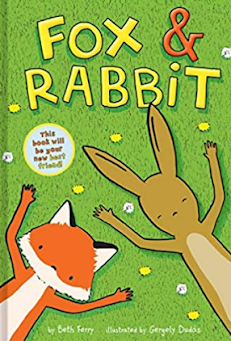Poetry
I love poetry, The language is often evocative and imaginative, encouraging new ways of looking at the world and seeing new truths. This week we are looking at a wide range of types of poetry for children.
Yes, We are Latinos!: Poems and Prose about the Latino Experience
Yes! We are Latinos is a collection of poetry and prose that explores the depth and breadth of the young Latino/a community and experience in the United States. The 13 profiles are gathered to bring the reader to ask what makes someone Latino/a and the rich cultural history that comes with it. Ada and Campoy directly address the readers directly in the introduction to encourage them to explore and to learn more, challenging what may be assumptions about the diverse group of people. After each profile and poem, there is background information and history related to the story, providing more context and knowledge of the Latino culture and histories
Bringing to the classroom, these poems provide the opportunity to help learn of the diversity and experiences. The poems also highlight issues that may be happening to those in the classroom, such as living with undocumented status or being asked to go by a nickname to “fit in better.”
Written by Ada and Campoy as composite experiences, the text is all free verse and new poems, linked together by themes of ethnic origin, current place, and Latin identity. Many of the poems are longer, spanning multiple pages. The meter is written in the style of thoughts, free flowing, with native languages sprinkled in but in a context where it is easily understood. The language is simple yet full of descriptions of the experiences of the youth portrayed. Poems work well as a collection but also can be separated and approached individually, if focus was desired.
Finally, the illustrations are black and white, highly stylized. Drawing style as culturally representative, the bold, dark lines are high contrast and capture some of the emotions of the poems, such as pride of heritage. Enriching the text with high contrast, the illustrations are integrated into the text in a way that does not detract from the poems themselves.
Out of Wonder: Poems Celebrating Poets
Out of Wonder is an anthology of poems about the love of poems and poetry. In the preface, Kwame Alexander explains his love and wonder of poetry. In selecting 20 of his favorite authors and poems, Alexander rewrites the poems in the style and voice of the original. Divided into three sections, each part addresses a new theme to incorporate into the following poems, such as use of style and/or voice.
The audience is intended for late elementary students, learning
and encountering many of the poets for the first time, and perhaps starting to
dig their own toes into the poems. For many children, this may seem a daunting
task, and these poems provide inspiration and encouragement to explore how it
feels to use and adapt different styles. Not only can this book be read for
enjoyment, but the adaptations can work well in a classroom setting to study
both the original and the new adaptation of the poems.
One of the most interesting aspects of this book is in the
variety of the poetic styles. While two other poets contribute to the
anthology, Alexander shows the flexibility of his skill to celebrate the many
different types of poems. Many of the original poems are from well known
authors, such as Emily Dickenson, Robert Frost, and Langston Hughes, and brings
with them familiarity when walking into a new poetic experience.
With each of the three sections, Alexander explains and
demonstrates how he celebrates the authors and the poems. Each poem title
references the original author, so guesswork is not necessary. Helpfully, in the
back of the book are mini biographies of each author and a page breaking down to
which eras the original poets belong.
The illustrations are bold and bright, evoking a sense of celebration. Matching each theme of the poems, both original and newly adapted, the illustrations tie the poems together and bring even more joy with the vibrant colors and rich detail.
Beginning immediately with a word play, Wet Cement utilizes
the concept of concrete poetry to demonstrate how fun and imaginative poetry
can be. Concrete poetry utilizes the words for visual effect to convey
additional or deeper meaning. In the introduction, Bob Raczka describes poetry
as “word paintings.” Throughout the collection, demonstrates the inventive ways
of imagining poetry as both word art and art made of words.
Targeting third and fourth graders, these poems are written
in simple language that is easily read but putting the art concept together
with the words provides a unique challenge, such as reading around a clock
while watching for time to leave school. With these visual effects, students
can see the way in which the form of the poem enhances the poem itself. The 21
new poems by Raczka twist and turn to play with the words both in the poem itself
and in the titles of the poems. As to be expected in this type of poetry, the
use of cadence, meter, and rhyme vary depending on the poem and the purpose of
the poem. The poems are simply listed in the table of contents, but the last
poem entitled “Poetry” is clearly intended as Raczka’s final word and encouragement
as the poem’s last word is TRY, taken from poeTRY.
Unlike the previous anthologies of poems mentioned here, the
“illustrations” of this book are completed via the words, as mentioned
previously. A fun way to demonstrate the poems, the word paintings also engage
the reader.







Comments
Post a Comment